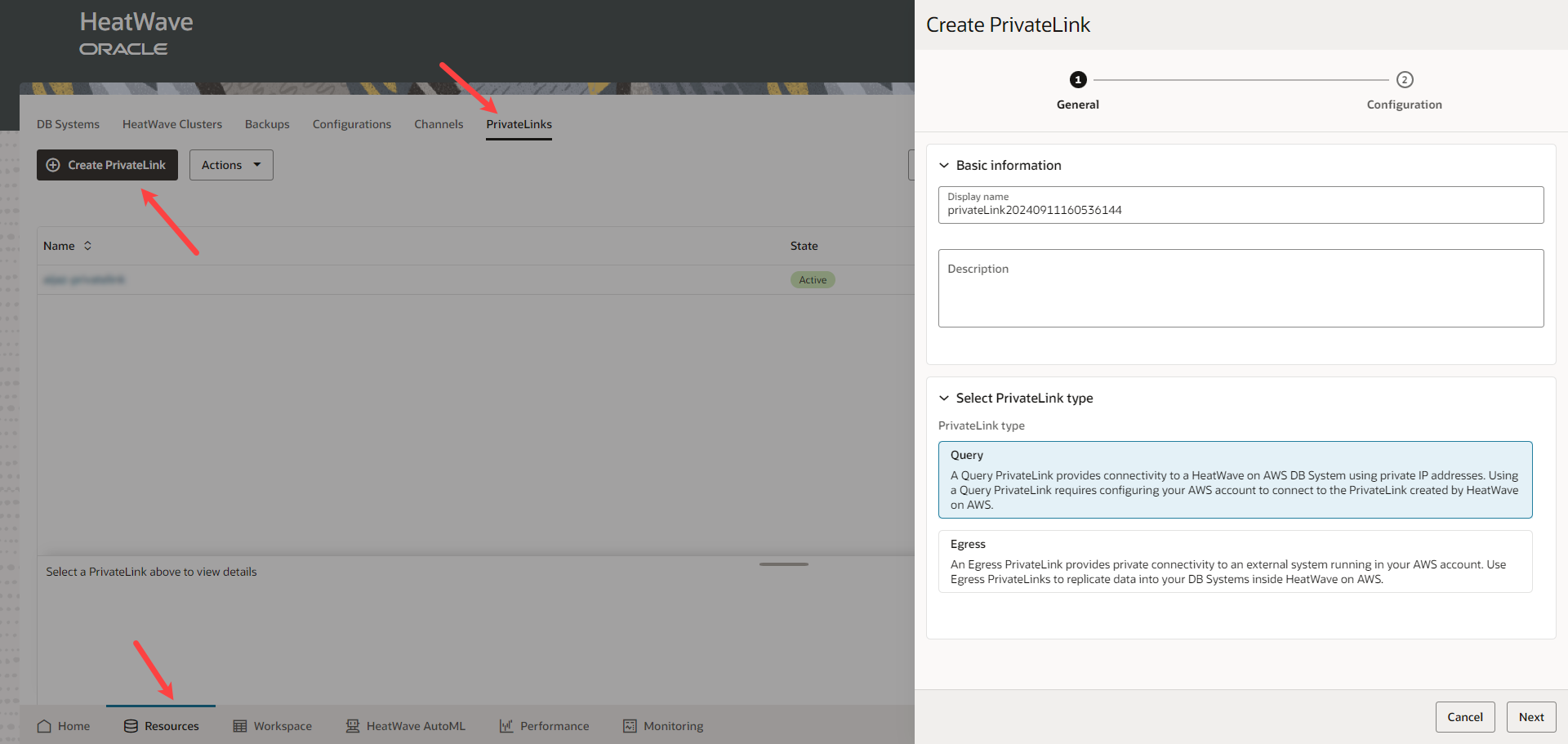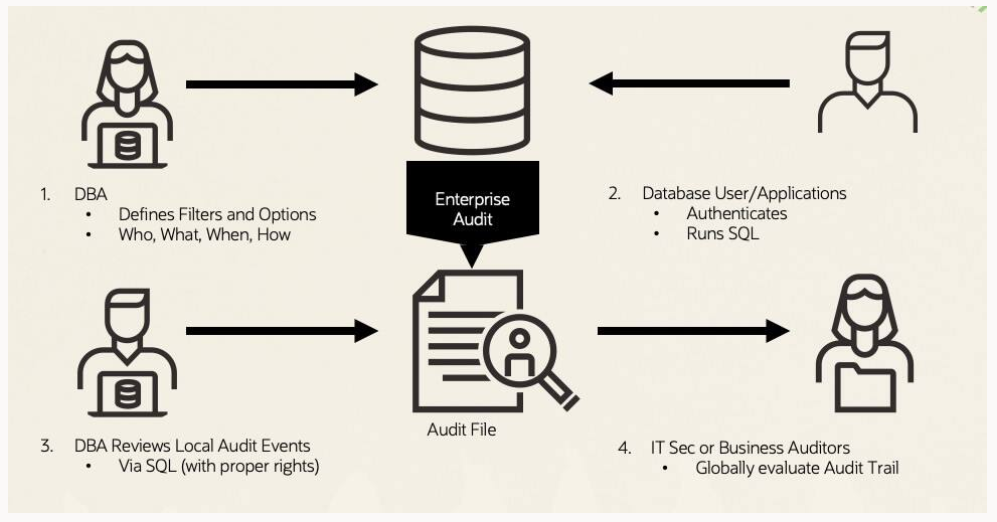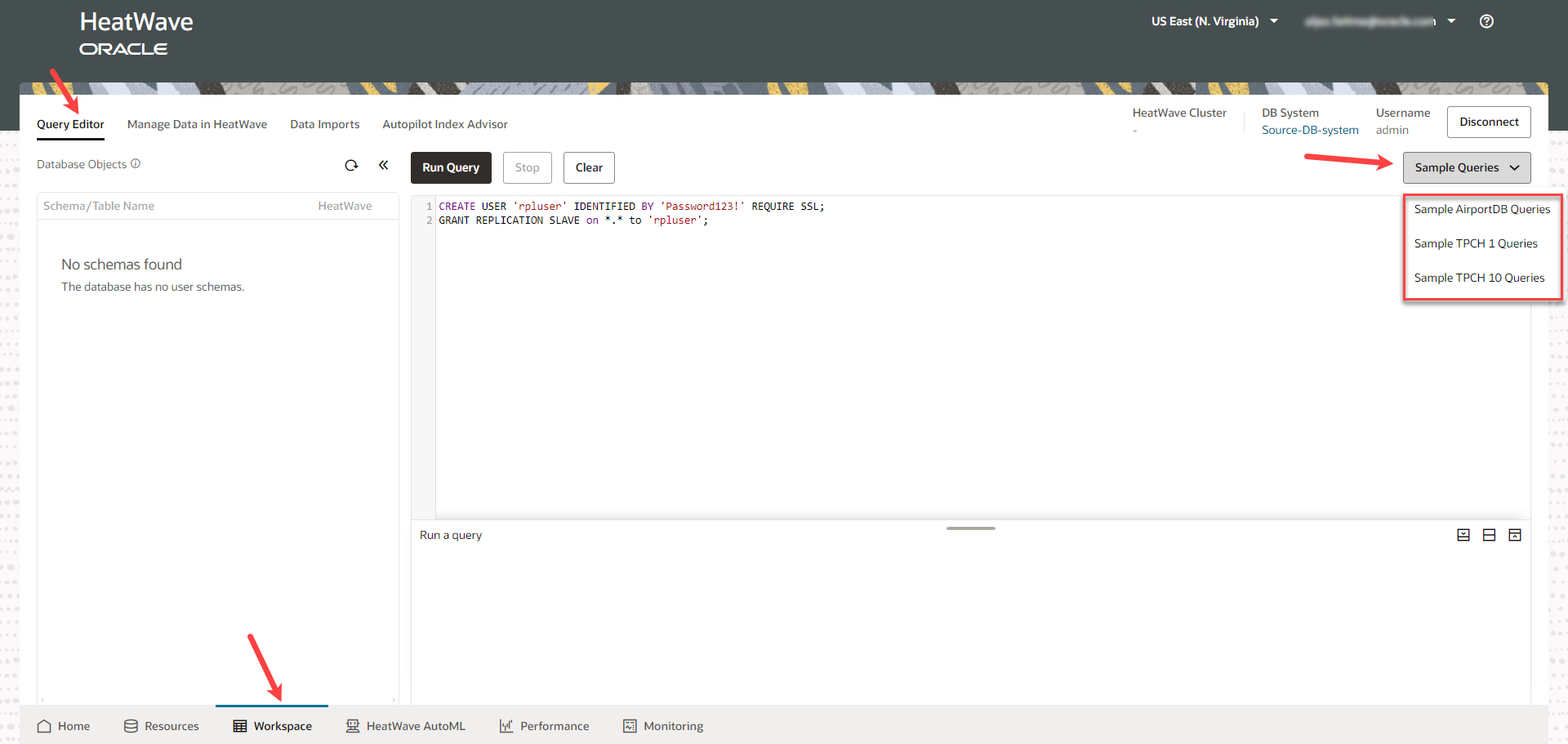We announced a slew of new features for HeatWave on both OCI and AWS platforms yesterday. Today we will discuss in more details on new features for HeatWave on AWS.

HeatWave on AWS runs natively on AWS infrastructure. All components, including the service console, control plane, and data plane, are built and optimized for AWS. This native integration with AWS enables customers with applications already deployed in AWS to benefit from HeatWave without incurring the latency associated with accessing a database service running outside of AWS.
We are introducing numerous new features to HeatWave on AWS that focus the following areas:
- Enable new class of applications and workloads
- Facilitate easy of migration from AWS Aurora and RDS
- Increase developer productivity
- Improve service availability and manageability
New class of applications and workloads
Many customers are using HeatWave on AWS to improve query performance for their MySQL workloads on AWS. The benefits of a single managed database service for OLTP, OLAP and machine learning on MySQL data, without the need of ETL and disparate services, lower the complexity and cost of the application while improving security.
In addition to MySQL data, AWS customers want to take advantage of HeatWave for data outside of MySQL and for generative AI use cases. We are excited to announce that HeatWave Lakehouse and HeatWave GenAI are now available on HeatWave on AWS.
HeatWave GenAI
HeatWave GenAI on AWS features industry’s first large language models (LLMs) integrated within the database, an automated in-database vector store, industry-leading performance and price-performance for vector processing (similarity search), and the capability for customers to interact with unstructured content in HeatWave using natural language.
HeatWave GenAI enables enterprises to take advantage of generative AI in a secure environment without requiring AI expertise or the need for data movement to other services. This facilitates a new class of applications that can be built with HeatWave.

HeatWave GenAI features include the following:
- Automated, in-database vector store: HeatWave vector store provides a fast, end-to-end, fully integrated pipeline which automates the vector store creation, from reading unstructured data in file formats such as PDF, HTML, TXT, PPT and DOCX, or scanned documents in AmazonS3, parsing the text in the documents, partitioning the text into smaller paragraphs(segments), encoding the paragraphs, and storing the encoding in a standard SQL table in HeatWave. For vector store creation, HeatWave GenAI is 39x better price performance than snowflake, 96x better than Databrick and 48x better than Google BigQuery.

- Scale-out, high performant similarity search: HeatWave provides a rich set of similarity search capabilities for building powerful and intelligent search applications across data lakes, databases, and vector stores. HeatWave supports a native VECTOR data type and an optimized implementation of the distance function, delivering very performant semantic search with results that are always predictable and exact.
- In-database LLMs: HeatWave GenAI in-database LLMs run on CPU, simplifying the development of generative AI applications at a lower cost. This ensures HeatWave GenAI is available in any HeatWave supported AWS regions. HeatWave GenAI is also integrated with Amazon Bedrock, allowing customers to have the flexibility to choose to use HeatWave in-database LLMs or Amazon Bedrock foundation models such as Cohere and Llama models.
- Data-driven, multi-lingual Chat: HeatWave provides a set of out-of-the-box chatbot functionalities. All chat processing and history is maintained in the database. It enables organization to easily create their own GenAI chatbot.
- In-database JavaScript: We have extended the JavaScript support in HeatWave MySQL stored procedures and functions to include native support for vector data type in Javascript and the ability to invoke GenAI capabilities from a JavaScript program. This allows developers to preprocess prompts based on SQL data, invoke LLMs directly within the database, and post-process the responses with ease.
For more information, see HeatWave GenAI.
HeatWave Lakehouse
HeatWave Lakehouse enables organizations to process and query hundreds of terabytes of data in Amazon S3 in various file formats, such as CSV, Parquet, and Avro, JSON, and Aurora/Redshift export files, and on-premises MySQL export files. Customers can combine data in Amazon S3 and transactional data in MySQL for analytics, machine learning and generative AI without copying the data from S3 to MySQL database.

Below highlights a few features:
- Incremental change propagation: HeatWave Lakehouse can uptake changes in user data incrementally without reloading the entire data set. Lakehouse automatically determines which files have been added/changed/removed. Ingestion of new data objects scales across the HeatWave cluster, delivering the same high load performance as first time LakeHouse table load. This makes updating HeatWave Lakehouse data very efficient.
- Write query results back to Amazon S3: HeatWave writes query results in parallel across the HeatWave cluster, allowing organizations to efficiently store data in object storage at a low cost. Organizations can share data across other applications easily, and it opens opportunities for transformation use cases.
- Perform machine learning tasks: Organizations can easily apply machine learning training, inference, and explanation to data stored in Amazon S3. can perform machine learning (ML) tasks, such as training, predictions, and explanations, on the data stored in S3. This eliminates the need to load data to a separate machine learning service, improving data security for application.
For more information, see HeatWave Lakehouse.
Easy migration from AWS Aurora and RDS
As mentioned above, many customers are looking to HeatWave to improve their MySQL query performance. Many of them are running their MySQL workload on AWS Aurora and RDS. To make it easier for them to migrate their workload to HeatWave, we are introducing a list of enhancements:
AWS PrivateLink support
Customers can now easily setup AWS PrivateLink between their AWS virtual private cloud (VPC) and HeatWave on AWS instances. This ensures HeatWave instances are isolated from public internet and all traffic to and from the HeatWave instance is within the AWS network.
For more details, see PrivateLink.

Inbound replication
Inbound replication uses MySQL native replication; it enables customers to setup replication to HeatWave instances. Customers can now easily perform live migration from their AWS Aurora or RDS workloads to HeatWave. It is also useful for customers who cannot move the OLTP workload to HeatWave but want to leverage other HeatWave capabilities such as analytics, lakehouse, AutoML and GenAI. These customers can setup inbound replication and replicate only the MySQL data that is needed.
Increase developer productivity
JavaScript stored programs
HeatWave on AWS now allows developers to write stored procedures and functions in JavaScript and run them directly inside HeatWave. JavaScript’s extensive language features, including user-defined types, containers, and functional programming constructs, streamline implementation compared to using SQL. Developers can create complex application logic in JavaScript and achieve high performance by executing the program within the MySQL database. These capabilities are now also accessible for data in Amazon S3.
HeatWave Autopilot indexing
HeatWave Autopilot Indexing is a machine learning-based feature that helps database administrators improve database systems’ cost and performance without manual intervention. In the InnoDB database, base tables are already indexed based on their primary key. The Autopilot Indexing feature automatically generates recommendations for creating and dropping secondary indexes based on the current workload. Additionally, there’s a simple and intuitive console UI that allows you to analyze the performance and storage impact of recommended index suggestions before applying them.

Improve service availability and manageability
High availability
HeatWave MySQL on AWS now supports high availability that enables applications to meet higher uptime requirements and zero data loss tolerance. A high availability DB system consists of three MySQL instances provisioned across different availability zones. The data is replicated among the instances using a Paxos-based consensus protocol implemented by the MySQL Group Replication technology. Application connects to a single endpoint to read and write data to the database. In case of failure, the Service will automatically failover within minutes to a secondary instance without data loss and without requiring to reconfigure the application. High availability is in limited availability (LA).

MySQL Enterprise Audit
MySQL Enterprise Audit offers advanced auditing capabilities for robust data governance, compliance, and security needs. It allows Database Administrators to define filters for specifying the collection of specific events and activities. These database events provide comprehensive details including user identity, activity details, timing, location, method, and more. Additionally, optional query execution metrics can be included, which can help identify issues such as slow queries.
For more information, see MySQL Enterprise Audit.

Events
Track changes about the state of resources such as DB Systems, HeatWave Clusters, and Backups through events, which let you identify and understand any failed actions or operations with detailed reports and explanations.
For more information, see Events.

MySQL Shape Change
You can now easily upsize or down-size the MySQL node in a HeatWave instance with only a few clicks on the console. There is no need to restore a backup to launch a HeatWave instance with the desired shape.
For more information, see Editing a DB System.
Try out HeatWave on AWS for free
Try out HeatWave on AWS for free with Oracle Cloud Free Tier. With an Oracle Free Tier account, you receive a US$300 free credit to use HeatWave on AWS for up to 30 days. We added improvements to make it easy for users to get started with HeatWave on AWS:
Starter DB system
With a few simple clicks, you can launch a pre-configured DB System with preloaded sample data to explore HeatWave on AWS.
For more details, see Launching a Starter DB System.

Sample data and queries
To make it easy for you to explore the various capabilities of HeatWave on AWS, we provide two sample schemas and data, airportdb and tpch (1GB and 10GB) for you to readily import to your HeatWave instance.

We also incorporate a set of sample queries for both schemas, airportdb and tpch, which you can simply run in the Query Editor on our console and get first-hand experience with query acceleration in HeatWave.

Additional Resources
- HeatWave on AWS Technical Brief
- HeatWave on AWS documentation
- HeatWave migration program
- Request a free HeatWave workshop

